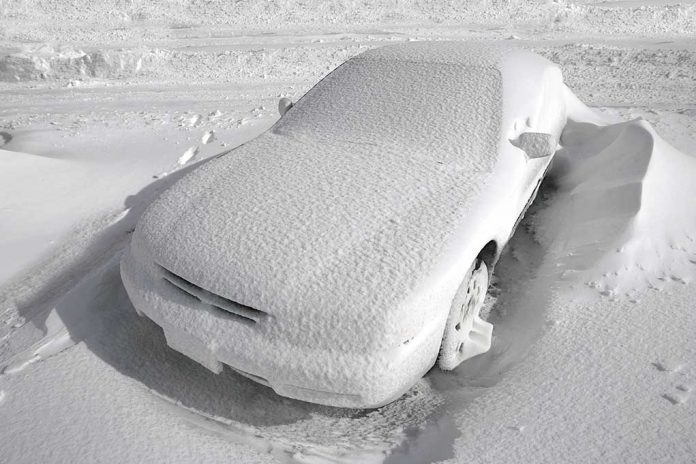
(UnitedHeadlines.com) – In the blink of an eye, a winter storm can form and barrel right toward us. Most people in the Northeast and upper Midwest are used to foul weather and are ready for most winter eventualities. But when old man winter takes a detour toward the south, people can be caught with their guard down. Here is how to stay warm in the event of a severe and potentially dangerous cold snap.
Dress in Layers
If the power goes out or there is no heat source, start warming up immediately. Do it by dressing in layers. This strategy helps combine the insulating factors of your clothing to retain your body’s own heat. Start with adsorbant, wicking, thermal full-body underwear. For those in traditionally warmer climates who may not own long underwear, long-sleeved T-shirts and leggings are an excellent first layer. From there, add to it a T-shirt or sweater, pants or sweatpants, then a sweatshirt and a jacket. Add a hat, even inside. A knit or watch cap is ideal for conserving body heat, but we can even line baseball caps with handkerchiefs or pillowcases to increase insulation in a pinch. Then grab a blanket and bundle up to lock in the warmth. Another tip: Cuddle close with family members for added body heat.
Conserve Heat and Space
A single-digit or below windchill is not only uncomfortable, it can be deadly. Once a person’s body temp drops below 95 degrees Fahrenheit, they can slip into hypothermia. If temperatures are plummeting inside a home, it’s time to act quickly.
Find the central or warmest part of the home (away from drafty windows and doors) and block it off with blankets or other thermal items. This tactic allows heat to stay trapped in the smaller space rather than allowing it to seep out through cold openings.
Set Up a Tent
Grab the camping gear and set up a tent inside the warmest part of the home. The temperatures inside a tent can be 5% warmer than the outside. This trick is a great way to stay snug and cozy during a brutal winter storm. For those who don’t own a tent, but have tarps or extra blankets, consider stringing a line inside from wall to wall or across chair backs and putting a tarp or blanket over to fashion a makeshift tent. Remember, never put a portable heater inside a tent because of the possible fire and carbon monoxide risks.
Don’t Use Non-Heating Devices for Heat
During weather emergencies, like when a sudden blizzard blows through unexpectedly, people may turn to make-shift heaters, candles, grills or stoves to stay warm. Unfortunately, these choices can be deadly because they may produce carbon monoxide. As little as 150 to 200 ppm of carbon monoxide (0.015 to 0.02%) over as few as 3 to 5 hours can kill. Be aware that sleeping in a vehicle with the engine running might also cause carbon monoxide poisoning. Select a safe heating alternative instead.
If temperatures are unbearably cold, call 911 for help right away. Shelters may be available during harsh conditions but may not always be readily accessible because of ice, power outages or heavy snow. Emergency personnel may take longer to respond because of high demand or conditions, as well. Whenever possible, check on elderly or infirm neighbors and call for help if needed. It’s vital to do everything you can to remain safe in the meantime. Following safety tips and staying as warm as possible are the keys to surviving until help arrives or temperatures rise. Here’s to warmer days ahead!
Copyright 2023, UnitedHeadlines.com














